Kendamil Formula: Everything You Need to Know
This post may contain affiliate links. As an Amazon Associate, I earn from qualifying purchases. Please read my disclosure.This in-depth guide will help you learn everything you need to know about possibly the most premium organic formula on the market: Kendamil. You’ll learn more about what Kendamil is, what the benefits are, how it compares to other organic baby formulas, and where you can find & buy it!
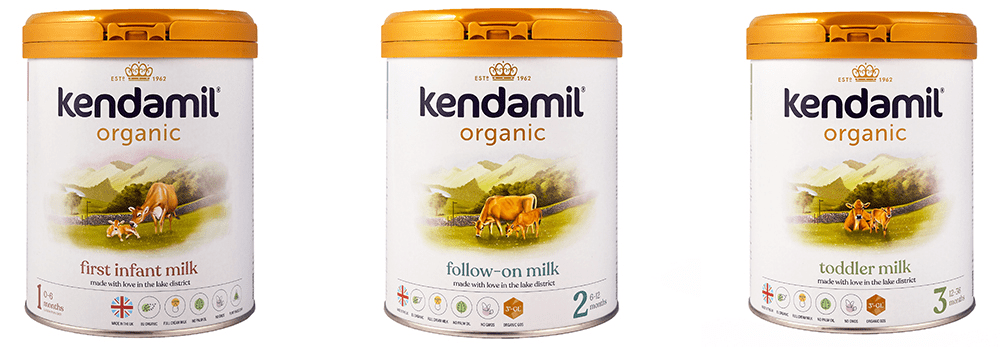
With so many baby formula brands competing to create organic baby formulas—it can be hard to choose the right one for your baby. However, one brand from Britain, which supplies the British Royal Family(!), is setting new standards for natural, organic formulas, supported by rave reviews from parents around the world. For parents wondering if Kendamil is worth the investment and hype, and if it meets the criteria for a healthy baby formula, this post is for you!
What is Kendamil formula?
Kendamil is the only infant formula made in the United Kingdom. Built on over 58 years’ expertise in infant nutrition and located in the heart of the English Lake District, a UNESCO World Heritage Site, Kendamil is a family business committed to developing the most premium, natural, traceable and sustainable organic formulation in the world.
Kendamil’s unique advantages trace back to their founder’s commitment to nature. As a farmer himself, Ross McMahon was passionate about developing the most premium infant formula in the world, exclusively using local, traceable ingredients to guarantee quality from farm to formula. He partnered with Steve McCann, an industry expert with over 40 years’ experience in infant formulations to create Kendamil in 2016.
Every can of Kendamil is designed, formulated and hand-crafted in-house. They also work hand-in-hand with 220 local organic farms around the English Lake District to meet the highest standards of organic farming, animal welfare and milk quality. This collaboration enables Kendamil to include the highest levels of natural mammal fats in the industry, as well as to be the only whole-milk formula that is both palm oil free and vegetarian friendly (it includes DHA/ARA by using zero fish oil).
This devotion to quality paid off in 2019, when the Royal Nanny of Prince William and Princess Kate contacted Kendamil to help with combination feeding for Prince Louis!
Is Kendamil a safe and healthy baby formula?
From my extensive research including conversations with the Kendamil team, I am confident that this unique formula sets a new standard for natural, traceable and organic formulas.
Kendamil is the only infant formula whose cows happily graze in a UNESCO World Heritage Site all year round. All of Kendamil’s supplier farms (who they know personally!) are organic and Red Tractor certified – meaning they meet the highest standards of quality and care throughout the supply chain, from farm to formula. Kendamil is organic certified by the EU, a much higher standard than the US. In addition, Kendamil meets the even stricter standards of the British Soil Association (which has the strictest interpretation of the European organic guidelines allowing only 5% non-organic vitamins / minerals in the soil). (Learn More: Kendamil vs. Bobbie).

What are the benefits of Kendamil?
#1 | EU CERTIFIED ORGANIC, BRITISH GRASS FED COWS
European formulas are popular for a reason – European organic standards and farming regulations are much higher/stricter than US organic standards. You can read more about the standards for European formulas, and the benefits of organic formula here.
Kendamil’s cows are grazed outdoors with access to indoor housing and milking twice per day, providing a stress-free environment and a healthy diet supplemented with silage and hay from grass production during winter. The native English Jersey cows are renowned for containing the highest % milk fat in the world and the highest nutrition per unit of volume of any cow in the world. Because of this, their milk is richer in Omega-3 fats, Vitamin E beta-carotenes and CLA fatty acids. Jersey milk contains 18% more protein, 20% more calcium and 25% more butterfat than average (a butterfat level up to about 6.8%). Furthermore, Jersey cows produce mainly A2 milk, which emerging evidence from studies in preschool children and adults suggests is less likely to be associated with digestive discomfort versus the A1 milk common in most cow breeds.
This is in direct contrast to American cows who produce A1 milk, and who are crammed into a factory, injected with antibiotics and hormones, and given low quality corn/soy based foods. The UK bans the use of growth hormones, and UK organic farms use natural manure and are prohibited from using artificial fertilizers, pesticides or chemicals. Kendamil ensures that their animals are treated ethically and with care, and that all organic feed and animal welfare standards are met for their cows.
Note: Kendamil recently launched a high quality goat milk formula for infants that follows the same farming practices as they use for their cows. See this guide for more information on the best goat milk formula (including Kendamil Goat).
#2 | NATURAL & HEALTHY FATS, NO PALM OIL
Today, most infant formulas are made with skim milk and have added vegetable fats to meet WHO guidelines and match breastmilk (which contains up to 30% milk fat). While there is nothing wrong with skimmed milk in formula, and some added fats (like coconut oil) are healthy, palm oil has a negative impact on our rainforests, wildlife and indigenous populations. Additionally, palm oil may cause digestive issues like constipation and may lower calcium and fat absorption in infants.
Because Kendamil uses natural full-cream mammal milk fat, they avoid the need for palm oil and use less vegetable oils overall. The type of fat in whole milk has a high concentration of medium chain triglycerides with palmitic acid in the Sn2 position (similar to breast milk triglyceride composition), which helps with calcium absorption, digestibility and fat absorption, and minimizes constipation. Kendamil uses a blend of coconut oil, sunflower oil and canola to provide linoleic acid and alpha linolenic acid, which infants need as a supplement in addition to the full cream milk fat to make Kendamil closer to breastmilk in composition.
#3 | NO FISH OIL, NO HEXANE, VEGETARIAN FRIENDLY
Omega 3 fats are essential to healthy infant development, which is why most formulas include DHA/ARA in some form (or, if they don’t, you have to supplement). Most formulas use fish oil as their source of DHA, which technically makes the formula not vegetarian or vegan friendly.
Kendamil uniquely sources their Omega-3 DHA from plant based pure marine algae (which is what fish eat to obtain their Omega-3). The algae DHA is extracted gently without the use of chemical solvents or hexanes. By going straight to source, Kendamil provides a non-allergen, plant-based source of essential DHA and ARA which also uniquely makes Kendamil suitable for vegetarians. They take their commitment to vegetarianism a step further by ensuring no animal rennet is used in the source of their Organic Lactose, Organic Whey and our Organic GOS. This makes them halal friendly too!
#4 | WHOLE MILK FORMULATION
Kendamil uses a whole milk base and contains the highest level of full-cream nutrients in the industry. Kendamil’s formula contains MFGM (Milk Fat Globule Membrane), scientifically proven to support infant cognitive development, and naturally found in milk fat (additional source here). Whole milk also contains naturally-occurring fat-soluble vitamins and minerals that babies need for growth and development. Skimmed milk has less of these vitamins, but formulas using skimmed milk end up adding additional vitamins back into the formula to make it match the components found in whole milk.
One nice feature of whole milk is that it’s naturally sweet! Which means that, without adding sugar, Kendamil’s formula has a unique golden color and creamy sweet taste that babies love.
#5 | NO SOY
Kendamil uses the full cream nutrient from cow’s whole milk to provide a source of naturally-occurring proteins, and on top of that, uses no soy ingredients (no soy oil, no soy lecithin and no soy protein). Why does this matter? Research has shown that too much soy in infancy can have negative effects later in life.
#6 | LACTOSE AS THE CARBOHYDRATE
Unless your baby has lactose intolerance, lactose is the best primary carbohydrate that a baby formula can include. Cheaper, processed substitutes for lactose include: maltodextrin, corn syrup, glucose syrup solids, sugar, brown rice syrup, sucrose, etc. In formulas that are hypoallergenic, some of these ingredients may be unavoidable. But for regular, organic baby formula, these ingredients should not be included as a source of carbs. Kendamil Stage 1 uses 100% lactose for their carbohydrate, meaning parents are getting the best carbohydrate for their babies without the non-lactose sugars. Lactose is naturally broken down slowly in the baby’s digestion process , so the pancreas does not have to quickly release insulin, therefore lactose has a low glycemic index.
#7 | ALL NATURAL
In addition to these benefits, Kendamil doesn’t contain any of the ingredients I recommend avoiding (that other baby formulas do contain). Those include: GMOs, soy products, lutein, lycopene, L-methionine, added sugars, and synthetic ingredients. Kendamil does include nucleotides and taurine, but unlike most formulas – they add these nutrients without using hexane. Here is a direct quote from them on the inclusion of both of these nutrients:
Nucleotides are the building blocks of human DNA. The Kendamil QA Department ensure these nucleotides are produced through a physical fermentation and filtration process without the need for chemical solvents and no hexanes.
Taurine is found in breastmilk has been shown to help aid visual development of infants. Like all vitamins (which with the exception of 3 (Vitamin B2, B12 and D), taurine is made synthetically in a laboratory in order to ensure consistent purity.
#8 | ENVIRONMENTALLY FRIENDLY
Kendamil has the lowest carbon footprint of any formula in the world thanks to their farm-to-formula, all-British supply chain. They are also the only formula that uses neither palm oils nor fish oils – protecting our rainforests and our oceans. Finally, all Kendamil products are stored in recyclable metal cans, perfect for re-use for planting or storage.
#9 | INCLUDES HMOs
For the first time in an organic infant formula, Kendamil has verified the presence of HMOs in Kendamil Organic through the use of High-Performance Liquid Chromatography (HPLC), which identified the presence of 3’-GL , 4’-GL and 6’-GL. All three of these HMOs are found in mothers’ colostrum after birth. 3’-GL has been proven in ex-vivo laboratory studies conducted by Utrecht University to protect the lining of the intestine of infants, shielding them from inflammation and benefitting their immune system.
Where Can You Find and Buy This Formula?
The great thing about Kendamil is that it’s very easy to get in the US from two of my favorite distributors: Organic’s Best and Bottles and Burps.
Organic’s Best is the only online retailer I’ve found that literally has every European formula you can think of. They are dedicated to ensuring that organic European formulas are available to any parents who want them in the US. And their supply chain is so robust they virtually guarantee that they will be in stock of all formulas at all times!
Bottles & Burps: When it comes to reliability and affordability, Bottles & Burps is the lowest priced US retailer I have found that sells Kendamil. They can get all of these products to most US households in 2-4 days from their with their standard free shipping from Europe.
If you’re looking to save even more, you can order bundles direct from their warehouse in Europe (with free, express 2-5 day shipping to the US). Express shipping from Europe is important because the alternatives can take upwards of 30 days and suffer additional customs delays.
What are the Differences Between Stage 1, 2, and 3 of Kendamil?
There are slight differences between the 3 Stages of Kendamil – so to help you figure out which one is best for your baby, I’ve outlined the differences between Stages 1, 2, and 3 below.
Stage 1
Kendamil Stage 1 is for birth to 6 months. You can use this formula to replace breastmilk or use alongside it as a supplement. Kendamil stage 1 is based on the same whey to casein ratio as breast milk which is 60% whey and 40% casein.
This formula is easy on digestion due to the use of whole milk and no palm oil and contains all essential vitamins, including MFGM, Iodine and Iron (for cognitive development), Calcium and Vitamin D (for growth and bone development), Iron, Zinc and Vitamins A, C & D (for the immune system) and DHA (for visual development). Lactose is the only/primary carbohydrate used (Stage 1 is 100% lactose), and along with natural milk fats, a combination of coconut, sunflower and canola oils form the primary fat source.
Each Kendamil product comes in a 800g recyclable metal can (better for storage and shelf life) with instructions (in English!). You’ll get approximately 31 bottles per 800-gram can.
Stage 2
Kendamil Stage 2 is a “follow-on” milk perfect for babies aged 6-12 months.
Kendamil Stage 2 has been designed with a whey to casein ratio of 50% whey and 50% casein. This is more like cow’s milk and is a transition to the normal family diet. It is higher in minerals naturally found in milk like calcium, magnesium and phosphorus and more satisfying for baby.
Each Kendamil product comes in a 800g recyclable metal can (better for storage and shelf life) with instructions (in English!). You’ll get approximately 29 bottles per 800-gram can.
Stage 3
Kendamil Stage 3 is for babies 12 months and onward. This “toddler milk” is perfect for parents who want to use formula into toddlerhood.
Kendamil Stage 3 is based on a whey to casein ratio, of 20% whey to 80% casein, allowing children over 1 year to be ready to be weaned onto normal cows milk of a similar whey to casein ratio. The iron and calcium content is higher than Stage 2.
Each Kendamil product comes in a 800g recyclable metal can (better for storage and shelf life) with instructions (in English!). You’ll get approximately 29 bottles per 800-gram can.
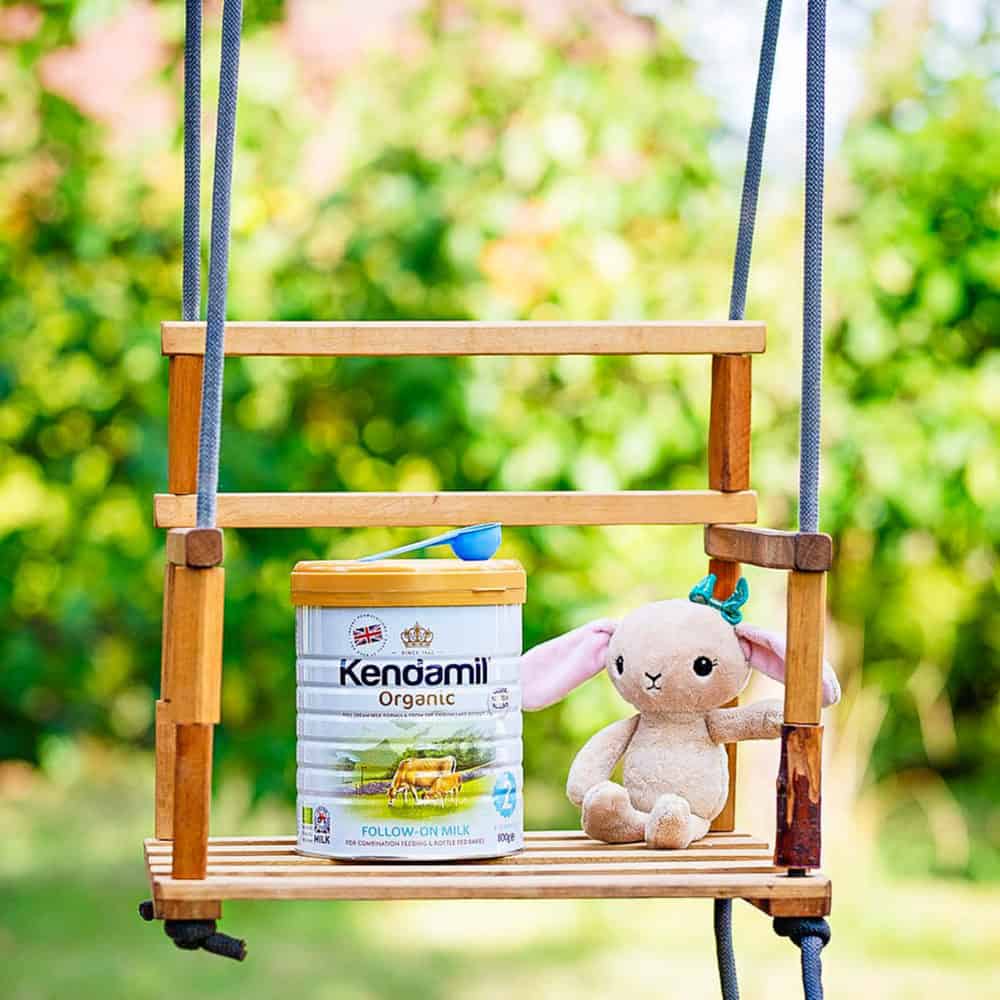
Final Thoughts
For parents who value nutrition, wholesome ingredients, and EU organic certification—Kendamil could be the perfect formula for you and your baby! Kendamil is made with sustainable, organic British milk and has no synthetic ingredients, no palm oil, and no soy products – which means you can be confident your baby is getting a healthy, safe, and nutritious formula to promote growth and development. Kendamil is one of my top ranked organic baby formulas among all of the options out there! If my kids were still in the 0-12 months range, I would purchase Kendamil to give to them.
Note: Kendamil does make a non-organic version of their formula, so when you are purchasing Kendamil, be sure to pick the organic version!



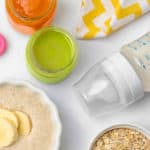
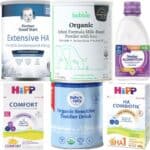
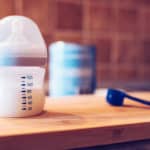
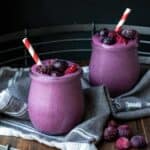

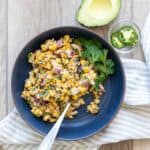
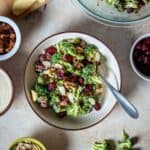



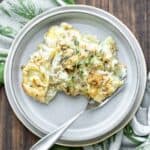
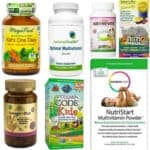
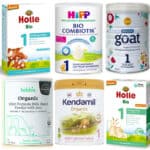



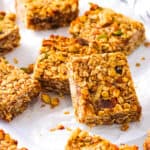



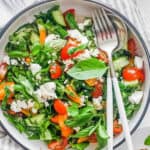


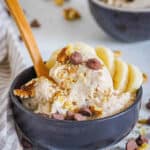


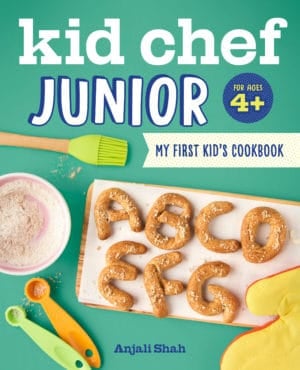



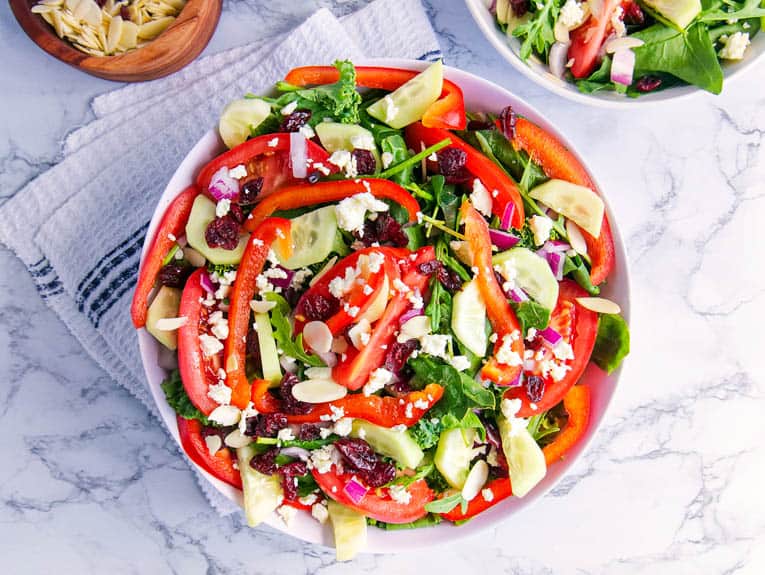


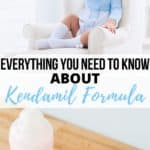
Hello,
When you say 1 can of stage one makes about 31 bottles, how many ounces/ml of formula are in these 31 bottles? 🙂
Thanks!
Hi Sarah! Each bottle should be about 7oz! Hope that helps!
Hi there,
I have had my son on stage 1 for up to 6 months with no issues. It has been great, but we recently switched to stage 2, and he is having a lot of gas and discomfort. We have only introduced solids in a teether. Should we go back to stage 1 or wait it out until he adjust? Please help!
Hi Jen! Introducing solids and switching to Stage 2 at the same time could be what’s causing the problem – it’s a lot to adjust to all at once! If your pediatrician is ok with it, I’d go back to Stage 1 for another month or two, and then switch to Stage 2 once his body has adjusted to solids well.
My baby use kendamil she is 11 months and weigh 14kg which is big for her age, please I need to place her on diet, kindly assist me..
Thank you.
Hi There! I would be happy to help but I need more details about her diet as well as more knowledge about her current medical care, what her pediatrician has told you, etc. If you want to email me at pickyeats@gmail.com I can chat with you more about my 1:1 programs!
Hi Anjali!
I have a 5 week old and I am looking to supplementing alongside my breastmilk because my supply is not great. What is the difference between the holle bio stage 1, kendamil stage 1 and the hipp dutch? All 3 seem so similar and have great reviews for what seems to be “best”. I want the healthiest option of course 🙂 Thank you!
Hi Anjelica! Great question! There are actually slight differences between all 3 and I’ll break them down for you here:
1) HiPP Dutch – uses skim milk (this is fine), has pre + probiotics (this is good if you don’t want to supplement separately), has palm oil (not ideal), doesn’t have any synthetic nutrients (this is good)
2) Kendamil Stage 2 – uses whole milk (this is also fine, some parents have a preference for whole milk over skim), has only prebiotics (this is fine, but will require supplementation of probiotics), no palm oil (this is good), includes a few synthetic nutrients but they are not extracted using solvents (neutral)
3) Holle Stage 1 – I’d say this formula isn’t as good as HiPP Dutch or Kendamil. This is because it includes maltodextrin (a high glycemic, processed carbohydrate), it doens’t include ARA (which is hard to find as a supplement for babies), and it doesn’t include pre or probiotics which would require you to supplement.
So I’d say you should choose between HiPP Dutch and Kendamil, based on two factors: 1) Whether you want to supplement with anything 2) Whether you want whole milk as the base for your baby’s formula. Hope that helps!
What probiotics would you use to supplement Kendamil Stage 1 for an 8 week old newborn baby? Thank you!
Hi Yvette! There are a few options that could work well:
1) Mary Ruth’s Infant Probiotic Drops
2) Zarbee’s Infant Probiotics
3) Culturelle Baby Probiotics
This post has more details on the differences between each one!
Is it better to use Kendamil 1 than to use Hipp Dutch 1 because of the Palm Oil??
Hi there! It really is personal preference — Kendamil is great because it has whole milk, no palm oil, uses no hexane and is vegetarian friendly. But if you want an “all in one” solution – then HiPP Dutch is more convenient as it includes probiotics and has no synthetic ingredients added. You really can’t go wrong with either one honestly! I might slightly lean towards Kendamil if you don’t mind supplementing with probiotics! 🙂
Hi Anjali,
I have started substituting my breast milk with Kendamil Stage 1 Organic. Currently my 4 month-old daughter is getting one bottle a day of formula and the goal is to have her fully transitioned to formula by 7 months. I was wondering if it’s okay to continue to use Stage 1 formula until we use up the stockpile we have or if it’s best to transition to Stage 2 at 6 months?
I compared the ingredient list and nutritional information – and Stage 1 and 2 are very comparable. The main differences I noticed is ratio of whey to casein (as you mentioned above), the amount of calcium and phosphorus, and the addition Taurine, Nucleotides and ARA in Stage 2.
Thanks for all the helpful info on formulas, such a great resource as a new mom!
Hi Maranda! So yes! You are right – Stage 1 and 2 are very comparable and the differences you mentioned are exactly right. Stage 2 should have slightly more iron than Stage 1 as well, since babies’ iron stores decrease after 6 months of age. If it were my baby, I would use Stage 1 until we used up the stockpile and then switch to Stage 2. I switched both of my kids to Stage 2 around 8 months for that exact reason 🙂 But you should consult with your pediatrician and do what they (and you) think is best for your baby! Hope that helps! 🙂
Hi Anjali
This is a great information that you have researched. I have to decided to get Kendamil but i was wondering if the nutrition information listed on that formula is as per the Infant Formula Act and Amendments in USA? How do I find that out? I tried to compare it but the units mentioned on Kendamil formula are little different than units used to list min and max nutrients info as per Infant Formula Act and Amendments in USA. Please advise.
Thank you
Mona
Hi Mona! The EU does have different regulations than the US when it comes to minimum amounts of nutrients in infant formula. For example, the iron requirements in the US are much higher than in the EU. I have spoken to the founders of Kendamil and they have confirmed that their formula meets the nutritional requirements for all infants, but they are obviously adhering to EU/UK standards. That being said, I would feel comfortable giving Kendamil to my kids if they were still drinking formula. My rationale is, if babies all over the UK and all over Europe (including the babies of the royal family) are drinking Kendamil and are doing well on it, there is no reason why it shouldn’t work for my own child! But you need to make your own decision based on what you’re comfortable with and what your pediatrician is comfortable with! I hope that helps, let me know if you have any other questions!
Hi,
Thank you so much for all of the great info! I’m trying to decide between the Kendamill and the Loulouka infant formula, any suggestions? It looks like the Kendamill contains some of the synthetic nutrients you recommend staying away from?
Thank you!
Hi Sarah! Honestly both are great and it’s just a matter of what you prefer – e.g. Kendamil has whole milk and DHA + ARA added, Loulouka has skimmed milk and only DHA added. If it were me, I’d probably pick Kendamil just because it’s almost impossible to supplement with ARA, and I’d choose that over some of the synthetic nutrients – which yes, Kendamil does add, but they have assured me that they don’t use solvents to extract the nutrients so that’s a step up from most formulas that do use synthetic nutrients. Hope that helps!
I’m trying to find more info regarding the synthetic nutrients. I found this,
Nucleotides. Produced from chemically-treated yeast.
Taurine. Processed with carcinogenic sulfuric acid.
L-carnitine. Banned by the National Organic Standards Board because of concerns over carcinogenic properties. As of February 2020, the European Union requires infant formula to contain this nutrient. (The reasoning: L-carnitine is naturally present in breast milk, and infants with a deficiency can develop a variety of disorders.)
But I read what you said about them not using solvents, what does that mean?
If switching from kendamil to a different formula, what would be an easy switch? We’ve also used Hipp UK in the past.
Hi! To clarify – by “not using solvents” I mean that Kendamil doesn’t use things like hexane to extract these nutrients – which is better than other formulas that both include the synthetic nutrients and use chemicals like hexane to process them. If you’re switching away from Kendamil then yes, HiPP UK or HiPP Dutch would both be great options. Hope that helps!
Hi Anjali,
I purchased my first can of Kendamil and my 3 month old seems to be loving it! Curious, can I pre make bottles and refrigerate them until ready for use?
Hi Emily! That is awesome! I believe you can pre-make bottles up to 24 hours in advance and store them in the fridge, but personally, I always felt nervous doing that – so I just made my bottles in real time. I’d ask your pediatrician what they feel most comfortable with and do that!
Hi my little one is 7 weeks old today and is suffering with constipation and terrible wind, we changed him to cow and gate comfort which initially helped now I feel he’s going back to how he was and unsettled again, would it be worth trying kendamil?
Hi Chloe! I’m so sorry to hear about your baby’s tummy troubles! If he hasn’t been diagnosed with a cow’s milk protein allergy, Kendamil is certainly worth a try if your pediatrician is ok with it. You won’t know whether it’ll work for him without trial & error, so if you do decide to switch, make sure you do it slowly, over a period of 1-2 weeks where you gradually increase the amount of the new formula and decrease the amount of the old formula. Hope that helps!
Hello,
My daughter is 6 weeks old and is currently on HiPP Dutch stage 1 but has been vomiting so much after feeding and has been very uncomfortable. I tried to give the formula time to see if she would adjust but it doesn’t seem to work.. I’d like to switch her formula however, I’m not sure which one to use.
She’s also very fussy, cries a lot which may be colic but I’m not sure. If I place my ear near her stomach it sounds very gassy/bubbly and upset..
Hi Diana! I’m so sorry to hear that your daughter isn’t doing well on HiPP Dutch! It’s hard to know whether it’s just an issue with this formula or if she she might have a milk protein allergy or intolerance. What I’d suggest is trying Kendamil Stage 1 which is made with whole milk and has no palm oil so it might be more gentle on her system than HiPP Dutch. If she doesn’t do well on Kendamil you may want to try a hypoallergenic formula with the direction of your pediatrician. Hope that helps! Let me know if you have any other questions!
Hi Anjali,
I have a six month old and unfortunately I am not producing as much breast milk as I did when he first arrived. I am trying to figure out what formula would be best for him. I am considering HiPP or Kendamil Stage 2. Which one would you recommend? I am looking for the cleanest formula and most natural.
Hi Veronica! Kendamil Stage 2 would be a great option for your baby! The main difference between Kendamil and HiPP is that Kendamil is made with whole milk and doesn’t have probiotics and HiPP Dutch is made with skimmed milk and does have probiotics. Other than that they are pretty close to identical! So it’s just based on your personal preference – whether you’d rather have whole milk and supplement with probiotics separately, or whether you’d rather just have an all-in-one package with probiotics included. Hope that helps!
Hi! I am a huge fan of your blog especially as a first time parent. Is Kendamil Stage 1 suitable to use until age 1? I am worried that the 50/50 whey & casein ratio in Stage 2 might cause stomach upset and worsen my little one’s reflux. Thank you in advance!
Hi Rose! Thanks so much for reaching out to me and for your kind words about my blog! Regarding Kendamil Stage 1, the main difference between that and Stage 2 is that Stage 2 has slightly iron and calories per serving. But if your pediatrician isn’t concerned with your baby’s iron levels and feels comfortable with your baby staying on Stage 1 then it shouldn’t be an issue!
Hi Anjali,
I am currently using Hipp Dutch Stage 1 for my 8 month old. We had a lot of trouble with constipation every time I tried switching to stage 2. My question is should I try Kendamil stage 2 if I use my own probiotics anyway?
Hi Candice! If you use your own probiotics, you can totally switch to Kendamil Stage 2 since that’s the only difference between Kendamil and HiPP (the probiotics). Hope that helps!
Hey Anjali! Shaifali here from Cal. Thanks for writing so much about baby formula and food – you’ve been our guide through all these decisions. Quick question about moving to Stage 2 formulas. With my first – We missed the Stage 2 boat completely and kept our son on Lebenswert Stage 1 until we were off formula at 1yo. Now, with our daughter who is 6 months old and also on Lebenswert Stage 1, I’ve ended up with a huge overstock of the formula because I had stocked up for COVID-19 when the shipping delays first happened. I’m wondering if it’s bad to keep her on Stage 1, or if it would be better to donate all the Lebenswert and move to Kendamil Stage 2. What would you advise? Thanks!
Hi Shaifali!! It’s so good to hear from you!! 🙂 So technically, Leb Stage 1 can be used from birth – 12 months. The main difference between Stage 1 and Stage 2 is the amount of iron (Stage 2 has slightly more per serving). If your daughter is starting solids and has had no issues with feeding, growth, weight gain, etc. then I think it would be fine to keep her on Leb Stage 1 until you run out, and then move her to Kendamil Stage 2. Also I’d just check to make sure your pediatrician has no concerns about keeping her on Stage 1! But I did something similar with my daughter — she was on HiPP Stage 1 until she was about 9/10 months (which is when I ran out of the stockpile I had accumulated), and then I moved her to Stage 2 at that point! Hope that helps! Let me know if you have any other questions and hope you are all doing well!
Super helpful! Thanks!!
No problem at all! 🙂
Hi Anjali,
Neatly written! Will you suggest Kendamil over Hipp Dutch?
Thanks,
Deepika
Hi Deepika! Honestly it’s a close call! Kendamil has the benefits of no palm oil, and non-hexane extracted DHA. HiPP Dutch has the benefits of pre and probiotics (Kendamil only has prebiotics) and it’s more widely available, and even though HiPP uses hexane to extract their DHA, they remove the hexane during processing and it’s not detectable in their formula. I’m still weighing which one to list first right now, but will update my main post as soon as I make that decision!
Thanks Anjali! Looking forward for your post to decide on the formula! As always thanks for your quick and valuable response!
No problem at all! 🙂
Hi! Thank you so much for all that you do to educate and inform parents. Ibe learned so much from you over the 6 years that I’ve been a mom.
Does Kendamil make formula for infants allergic to milk? If not, what do you think is the best option on the market right now?
Thank you so much!
Hi Adi! I’m so happy my blog has been helpful to you! So unfortunately, Kendamil doesn’t have hypoallergenic options available in the US that I know of. Instead, I would recommend either HiPP HA or HiPP Comfort. HiPP Comfort is the most broken down European formula available (it is an extensively hydrolyzed protein – 86-87% broken down, 100% whey/no casein, and has a reduced lactose content and modified fats.) HiPP HA is also 86-87% hydrolyzed and is 100% whey but it does not have reduced lactose or modified fats. You can read more about why I recommend these two hypoallergenic formulas here: https://pickyeaterblog.com/best-hypoallergenic-baby-formulas/. Hope that helps!
Thank you so much!
No problem at all! 🙂